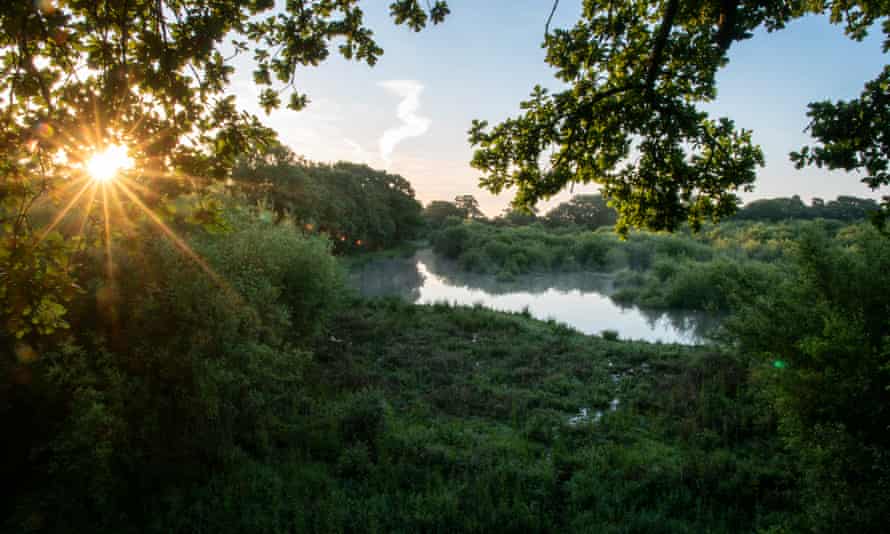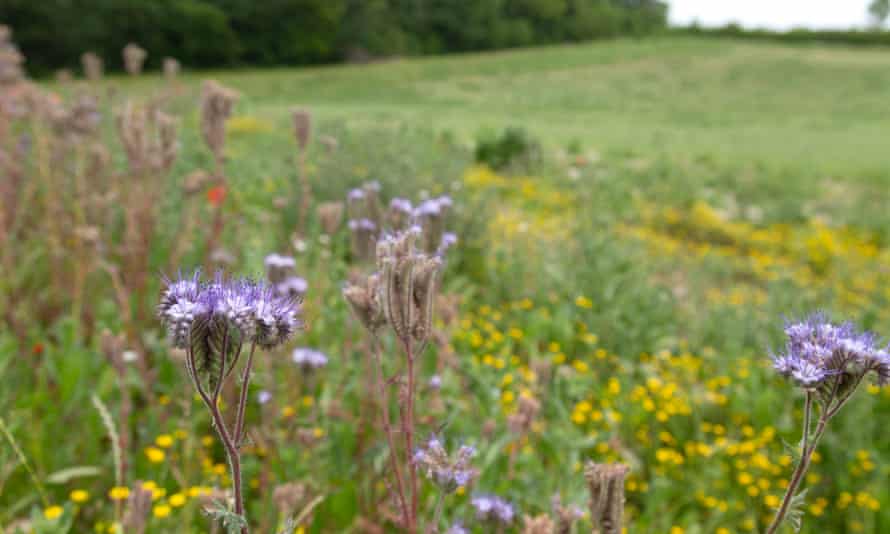New biodiversity algorithm ‘will blight range of natural habitats in England’
Natural England biodiversity metric will let valuable wildlife habitat be logged as ‘degraded’ land and penalise rewilding, warn ecologists

Last modified on Wed 21 Jul 2021 12.33 EDT
The government’s new metric for biodiversity will have to be urgently improved if it is going to be fit for purpose, academics and conservationists have warned.
The biodiversity net gain (BNG) metric, published by Natural England in July, outlines how new roads, houses and other building projects must achieve no net loss of biodiversity, or achieve a 10% net gain elsewhere if nature is damaged on site.
Information about a habitat, such as its type, size and condition, is fed into an algorithm, which then gives a number defining how valuable it is for biodiversity.
But the new metric does not value scrubby landscapes dominated by bramble, thistle and ragwort, which are often key features of rewilding projects. Instead it logs them as a sign of “degradation”.
Much of the Knepp estate in Sussex, England’s leading rewilding project, would “barely register for biodiversity” under the government’s new calculations, according to its owner, Isabella Tree. “Something wrong there,” she tweeted.
Steven Falk, an entomologist, said: “This has the potential to be the single most dangerous thing to be done by a statutory agency I’ve seen in all my 40 years working in nature conservation.” He said that the designation blighted a high proportion of habitat conditions and could affect hundreds of thousands of sites.
Sand quarries and field margins were among the undervalued habitats, despite being very rich for wildlife, he added. “People could look at an awful lot of wildlife habitats and say it’s degraded and therefore doesn’t need compensating for.”

Connectivity between these habitats has also not been taken into account. The metric, for example, does not distinguish between low-value scrub next to a carpark and ecologically rich scrub at rewilding projects such as Knepp, which is home to high numbers of the critically endangered nightingale and turtle dove. And more than 100 insect species have been found in connection with ragwort at the rewilded farm.
Further, docks (of the genus Rumex) were cited as “undesirable” plants in the government calculations, despite their being consumed by hundreds of insects, and being a favourite of many moths and butterflies.
Sophus zu Ermgassen, an ecological economist at the University of Kent, who has written a paper on the BNG metric, said: “The metric was not designed for rewilding. It was designed with very traditional conservation management in mind. It penalises rewilding-style management and for me that’s the most exciting type of management in the UK. We need to find a way of valuing scrubland that forms part of an open mosaic that is reminiscent of the evolutionarily ancient landscapes of Britain, because that stuff is goddam valuable.”
Zu Ermgassen’s team assessed 6% of the housebuilding in England between January 2020 and February 2021 in six local authorities that had adopted the scheme ahead of its national rollout, according to the paper published in Conservation Letters.
In total, “BNG” building developments led to a 34% reduction in green space, offset by promises of a 20% increase in total biodiversity according to the metric due to expected creation of smaller, but supposedly more ecologically valuable habitats, in the future.
Essentially, the metric trades wildlife losses today for uncertain future gains. “If those promises don’t materialise – and we have good reason to believe they might not – we risk just accepting losses of greenspace that aren’t properly compensated for by biodiversity increases,” said Zu Ermgassen.
He said he believed the aims were impressive but that the system needed to be improved, with possibly the creation of a separate metric for rewilding. “There are really good academics, developers, NGOs and government officials working on net gain throughout the UK. The country has decent governance, and one of the most decrepit biodiversity baselines there is, so if we can’t make it work here it probably can’t work anywhere,” he said.
The UK has committed, by the mid-2020s, to build 300,000 homes a year. The BNG metric will be implemented in England two years after the environment bill is ratified, so most likely in 2023. It is believed that no similar policy is being created for the devolved nations.
Jamie Robins, projects manager at Buglife, said a huge number of mitigation commitments from developers were already failing to be delivered. A fundamental problem was that habitats that had existed for decades or centuries could be destroyed and replaced by a habitat present there for 30 years.
“When you also consider that habitats take many decades to accrue wildlife value, it is unclear how BNG actually reflects any gains at all but instead the gradual replacement of habitats with temporary and lower quality ones,” Robins said.
The chair of Natural England, Tony Juniper, said investing in nature’s recovery was a “vital national priority” and that the metric will help create “thriving natural spaces for people as well as wildlife”.
He said: “As well as benefiting nature and providing greater access to nature where people live and work, these new tools can help streamline the planning process, by clearly and objectively assessing any losses and gains in biodiversity. It is important to remember that the starting point is avoiding harm in the first place, and only moving to mitigation through net gain where that is not possible.”
